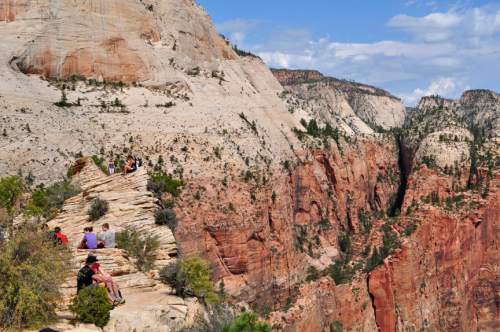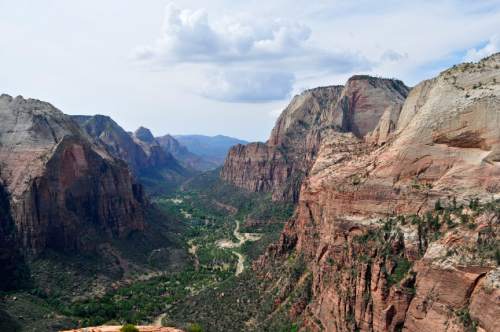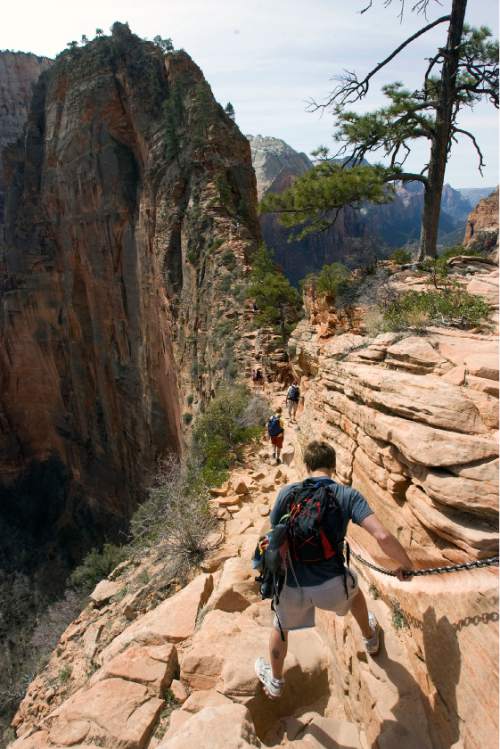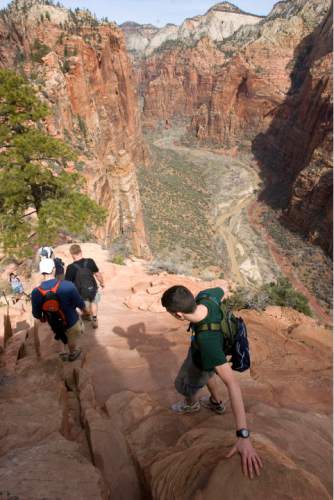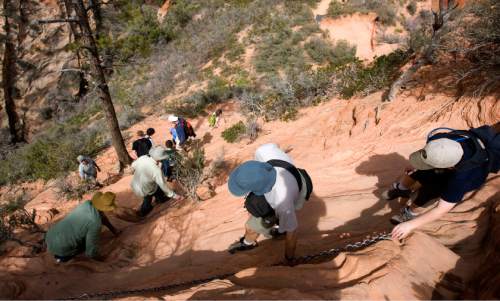This is an archived article that was published on sltrib.com in 2015, and information in the article may be outdated. It is provided only for personal research purposes and may not be reprinted.
Zion National Park • Cheetah Platt works as an acrobat, but he's hardly fearless.
Before he decided to hike Angels Landing, he read materials online and the literature provided by Zion National Park. They described the plateau at the end providing spectacular views of the park and southwest Utah, but also the 1,500-foot elevation gain and the trail's cliffs and a narrow ridge near the top.
When Platt and his family hiked Angels Landing last month, he was surprised.
"The chains up at the last 5 percent [of the trail] make it really safe for any kind of an athletic person," said Platt, who has worked for Cirque du Soleil, Disney and Paramount Pictures, "and I was impressed by the wide range of people who were able to complete the hike."
Platt and his wife, Rhiann, tweeted a photo from Angels Landing in which he is holding her vertically and upside down.
It was a glamorous photo for a hike with a bad reputation. The magazine Outside last year named Angels Landing one of the deadliest trails in the world.
That reputation is getting a makeover. Angels Landing has gone five years without a death. (Graphic: Which parks had the most searches and rescues in 2014.)
Safety began to improve in 2011. That spring, the National Park Service erected a sign near the trailhead warning Angels Landing hikers — or would-be hikers — that six people have died from falls on the trail since 2004.
"The route is not recommended," the sign says, "during high winds, storms, or if snow or ice is present."
The park service also installed more chains, which hikers can grip like a stairway railing as they walk. The park service also carved more steps in the rock.
Ray O'Neil, a district ranger in Zion National Park, said it seemed as if hikers were too casual near cliffs. "We're trying to get people to recognize the dangers of a misstep."
The improvements may provide a lesson for the rest of the National Park Service, said Travis Heggie, an associate professor in the Tourism, Leisure, & Event Planning Program at Bowling Green University. Heggie has delved into park service data and published papers on accidents and searches and rescues in national parks. His papers have urged the agency to adopt a prevention strategy.
Heggie likes the idea of warning signs and railings.
"Anything that will prevent it from happening in the first place," he said, "because it is a lot more effective" than retrieving someone later.
The last recorded death on the Angels Landing trail was Regine Milobedzki, 63, of Upland, Calif. She fell from Scout Lookout on April 27, 2010.
O'Neil said Milobedzki was seen sitting on the edge of Scout Lookout. When she stood up, O'Neil said, Milobedzki lost her balance. She plummeted about 1,000 feet.
Twitter: @natecarlisle



